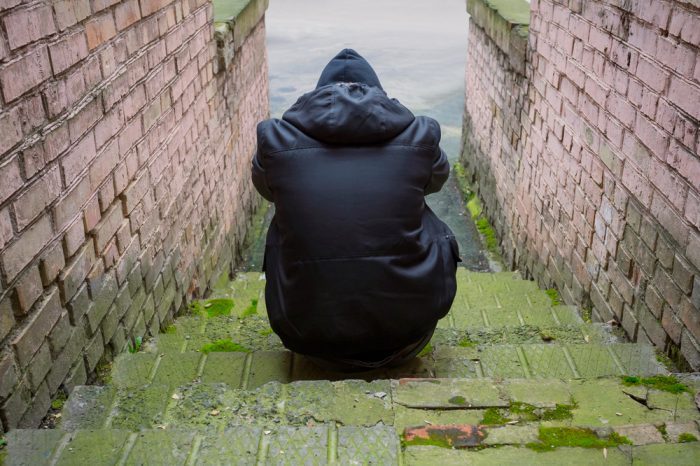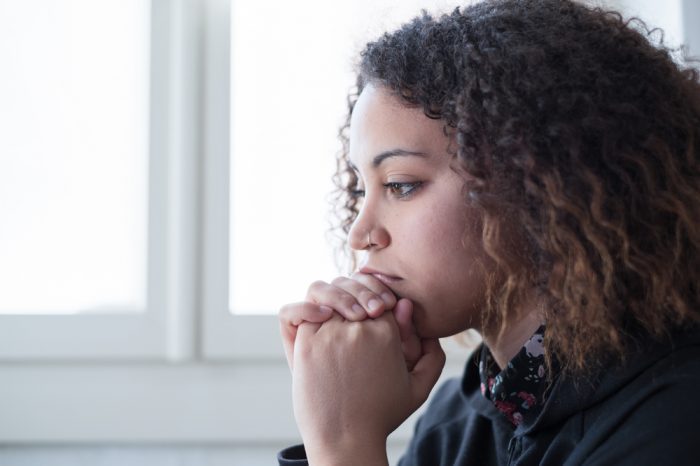Circulating endocannabinoids are reduced in people that go on to develop PTSD after trauma exposure.
Could an endocannabinoid deficiency contribute to PTSD symptoms? The statistics on Post Traumatic Stress Disorder (PTSD) are startling. Up to 30 percent of veterans develop the symptoms of PTSD throughout their lifetime. That’s roughly 11 to 20 returning veterans out of every 100 from the Gulf War, and up to 30 out of every 100 from the Vietnam war.
Symptoms vary between patients, but can include intrusive thoughts, flashbacks, emotional turmoil, and associated mental health issues ranging from anxiety to depression. Nightmares, avoidance characteristics, and personality changes are also common.
There is no cure for PTSD. But recently scientists have made breakthroughs in understanding how PTSD can change the brain on a molecular level. One discovery is an endocannabinoid deficiency among patients with PTSD. The road to recovery can be long and it’s important to have, not only an understanding of the science behind the brain changes, but also a good support system.
The Role of Cannabis in the Endocannabinoid System
Cannabis is chock full of compounds called cannabinoids. These cannabinoids infiltrate the endocannabinoid system to produce positive medicinal benefits. Biology 101 certainly doesn’t teach the endocannabinoid system. But it plays a crucial role in managing stress, mood, memory, appetite, pain, and much more. Crucially, your endocannabinoid system regulates your mental health.

It functions as a body-wide network of receptors, called CB1 and CB2. Our bodies produce endogenous chemcicals, called endocannabinoids, that control receptor activity.
Importantly for cannabis research, cannabinoids mimic the characteristics of endocannabinoids. Cannabinoids (from cannabis) also manage stress, mood, memory, appetite, pain, and everything else that our own endocannabinoids manage. With these therapeutic properties, it’s no wonder cannabis consumption is increasing among veterans in the U.S.
PTSD, the Brain, and an Endocannabinoid Deficiency
Until recently, researchers haven’t been certain about which pathways cannabis uses to deliver stress reduction, particularly as it applies to PTSD. A study at Vanderbilt University, published in Neuron, has connected PTSD to a deficiency in a naturally produced endocannabinoid called 2-arachidonoylglycerol (2-AG).
2-AG is an endocannabinoid agonist (or activator), particularly with CB1 receptors. The brain contains high concentrations of these receptors. Interestingly, one of cannabis’ most familiar cannabinoids, THC, is also a CB1 agonist.
The results of this preliminary study showed that mice that were genetically modified to produce less 2-AG, there was an increase in symptoms of anxiety and depression. But, when researchers administered a supply of 2-AG, these symptoms reversed. This intel suggests that PTSD develops due to a lack of naturally produced cannabinoids, which is a typical result of long-term or chronic stress. If your body isn’t producing enough cannabinoids, researchers call this an endocannabinoid deficiency.
Furthermore, 2-AG acts on CB1 receptors found in the amygdala. The amygdala is an essential emotional regulation center in the brain. It controls fight-flight-freeze responses.
What happens if the body is suffering from an endocannabinoid deficiency and not producing enough 2-AG? The amygdala is not able to regulate stress-related responses.

THC Brings Calm Despite Endocannabinoid Deficiency
Fortunately, THC can take the place of 2-AG and bring a sense of calm for patients.
According to a study from Molecular Psychiatry, people with PTSD have a higher volume of CB1 receptors in the brain. This means they need even more 2-AG than the average person. And having an endocannabinoid deficiency can have significant consequences.
Strangely, as an adaptive and protective measure, when neurotransmitter levels are low (such as fewer available 2-AG), the body’s response is to increase the number of receptors. It’s like casting a wider net to make sure you catch what little fish are left in the lake.
No Effective Cure for PTSD – Yet
There is currently no effective medication for PTSD. Anecdotal reports from patients tell us that cannabis brings more relief from PTSD symptoms than antidepressants or other psychiatric drugs. It is likely that it is this CB1/THC relationship that is alleviating PTSD symptoms.
Many veterans already rely on cannabis to alleviate the symptoms of PTSD, despite minimal research. As one literature review explained, that the “Lack of large-scale randomized controlled trials makes any final conclusions difficult.” That said, the early work is promising.
The literature review above did find that “Many of the published studies suggest a decrease in PTSD symptoms with marijuana use.” Although the authors noted, many studies could only draw limited conclusions on the nature of this relationship.
One small study, published in 2014, discovered “Greater than 75% reduction in CAPS symptom scores were reported when patients were using cannabis compared to when they were not.” This study used CAPS, or The Clinician-Administered Posttraumatic Scale for DSM-IV. It analyzed 80 patients who applied to the New Mexico Medical Cannabis program. Clearly, this begs further research to support their findings.

Across the U.S., cannabis has become a standard recommendation for symptoms of PTSD, at least in the legal states. Many places in the U.S. have added PTSD to the list of accepted conditions for medical marijuana programs (although the Veterans Affairs department is less enthusiastic about cannabis).
While we might need more information on the biological mechanisms for the therapeutic use of cannabis for PTSD, it hasn’t stopped the growing tide of people who are trying it.
A Word of Caution for Managing PTSD with Cannabis
There are some cautions for taking cannabis for PTSD. Chronic cannabis consumption results in a reduction in the number of CB1 receptors in the brain. When there are sufficient cannabinoids present, the number of receptors reduce. Over time this can lead to increased tolerance and a decreased medicinal benefit.
What happens for some patients is an increase in anxiety and irritability. Increasing THC solves this. However, this can get very expensive, and there is a poorly understood relationship between cannabis consumption, PTSD, and cannabis use disorder.
Speak with your physician for more information on cannabis use disorder, and how to implement a safe and effective treatment regime for PTSD-related endocannabinoid deficiency.






Derek Cloar
Malarkey! PTSD is a spiritual battle! Cannabinoid therapy can help a person be strong to fight the battle or ignore the battle, whichever they choose.
Jennifer Grant
Recovery may be a spiritual battle, but the cause is rooted in physiology.